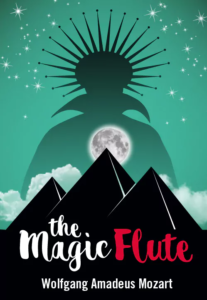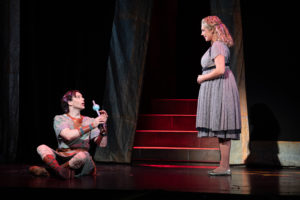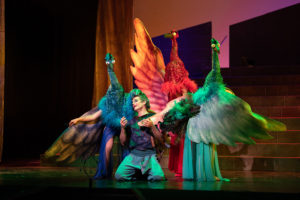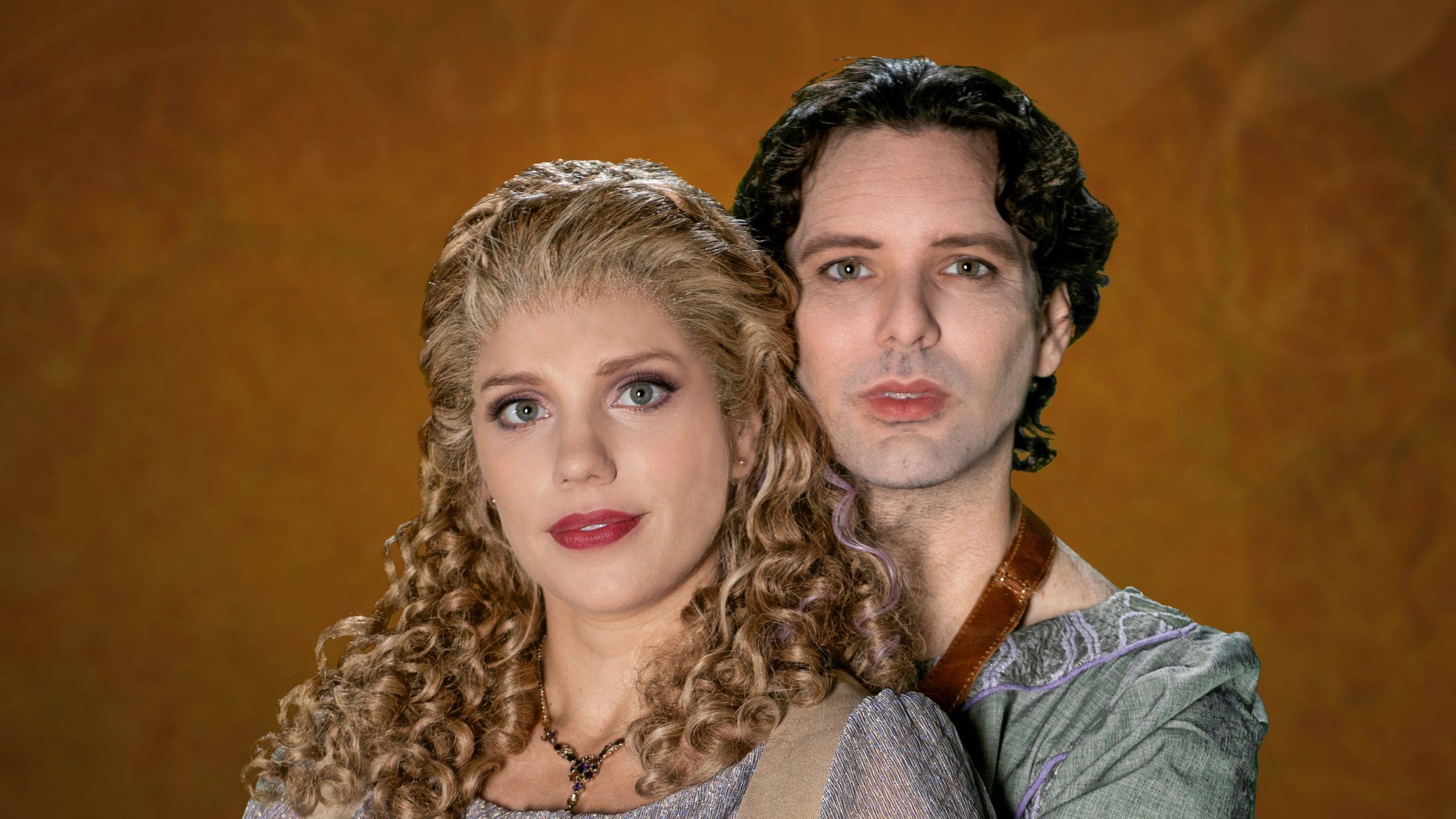LOGAN — Wolfgang Amadeus Mozart’s The Magic Flute is a challenging opera to produce. It is a fairy tale of darkness, light, and finding your way in the world which takes the form of a Singspiel, which means it includes singing and spoken dialogue. The Magic Flute has an adventure/fantasy with a libretto by Emanuel Schikaneder and is strongly influenced by Mozart’s interest in Freemasonry. Utah Festival Opera and Musical Theatre has chosen it to be one of their offerings this summer and, though the orchestra and singers (under the masterful baton of Nicolas Giusti) are incredible, the production is disappointing.

Originally written German and sung in English (with an unimaginative and boring English translation by Barbara Silverstein), the story opens in the middle of the action. Tamino (played by Thomas Massey), a prince lost in a foreign land, is being pursued by an enormous serpent. He is rescued by three mysterious ladies, who kill the serpent and give Tamino a picture of Pamina (played by Kara Goodrich), the daughter of the Queen of the Night (played by Celena Shafer). Tamino instantly falls in love with Pamina. The ladies tell him that Pamina has been captured by the powerful and evil Sarastro, (played by Matthew Soibelman), and Tamino vows to rescue her. With the gift of a magic flute and some magic bells and the assistance of the bird-catcher Papageno (played by Lee Gregory), who has become reluctantly involved, Tamino sets off on his quest. However, he soon discovers that nothing, not even Day and Night, is quite as it first appears.
The Utah Festival Opera production is uneven at best, with the production never deciding on what it wants it to be. Is it serious? Slapstick? Romantic? Comic? Some of this “unevenness” is inherent in the show itself, which is why it is a difficult opera to produce effectively. That is why a firm and steady directorial hand is needed. Director Vanessa Ballam lacks a solid vision and fails to keep the show on track. So, the production feels like it blows in any and every theatrical direction, with no rhyme or reason. For example, there is a bit in Act II with three guards who do a “Three Stooges” schtick, and the Queen of the Night is directed more like the Witch in Hansel and Gretel than the frightening, revenge-seeking woman she is. The result is an ineffective production, with gorgeous music and singing, but little emotional engagement and satisfaction.

The singers are amazing and perfectly cast in their roles. Massey is a wonderful and engaging tenor, perfect for the role of Tamino, as is Goodrich as Pamina. Her aria “Oh, I feel it, it is gone” (“Ach, ich fühl’s, es ist verschwunden”) is exquisite. And Shafer is masterful (as always) as the Queen of the Night. This is one of the most challenging roles in the opera repertoire especially with her aria “Hell’s vengeance boils in my heart” (“Der Hölle Rache kocht in meinem Herzen”) with the singer having to execute high Fs repeatedly (a note that most sopranos can only think about hitting) and which Shafer does effortlessly.
Gregory is delicious as Papageno. He has an expressive and engaging baritone voice, and he uses it well. Papageno is a fun, show-stealing role, and Gregory does just that. Also noteworthy are Sara Lucille Law as the delightful Papagena, Soibelman (who is an amazing bass) as Sarastro. Finally, the Three Spirits played by Stein Rockwood, Sebastian Espinosa, and McKay Clemens are charming.

There is no one that writes for women’s voices like Mozart, and audiences get to hear that splendid expertise in the opening scene of The Magic Flute when Tamino enters, pursued by a nasty serpent and sings, “Help! Help!” (Zu Hilfe! Zu Hilfe!”). This segues into the trio for three sopranos, “Die, monster, by our might!” (“Stirb, Ungeheuer, durch uns’re Macht!”), beautifully sung by the Three Ladies: Amber Rose Romero, Tzytle Steinman and Sarah-Nicole Carter, who kill the monster and rescue Tamino. The scene is a joy to listen to.
Whereas the music is wonderful, the overall production design is disappointing as well, and, for the most part, unimaginative. The set design by Timothy Case is rudimentary and mundane. The costumes, designed by Jenn Sheshko Wood are a bit better, especially for the male characters, but are lackluster and unflattering for the women. Melyssa Swensen’s wig and makeup design are quite good, especially Papagano’s. The strongest technical aspect in the production are the amazing puppets designed by Dennis Hassan. They are incredible, but out of place, quite frankly, in the overall design of the production.
Utah Festival Opera and Musical Theatre’s The Magic Flute is worth seeing to hear the incredible voices and orchestra. Why? Because even a disappointing production of Mozart is better than a good production of almost anything else.
[box]The Utah Festival Opera and Musical Theatre production of The Magic Flute plays July 15 and 28 at 7:30 PM and July 23 and August 5 at 1 PM at the Ellen Eccles Theatre (43 South Main Street, Logan). Tickets are $5-85. For more information, visit utahfestival.org.[/box]

